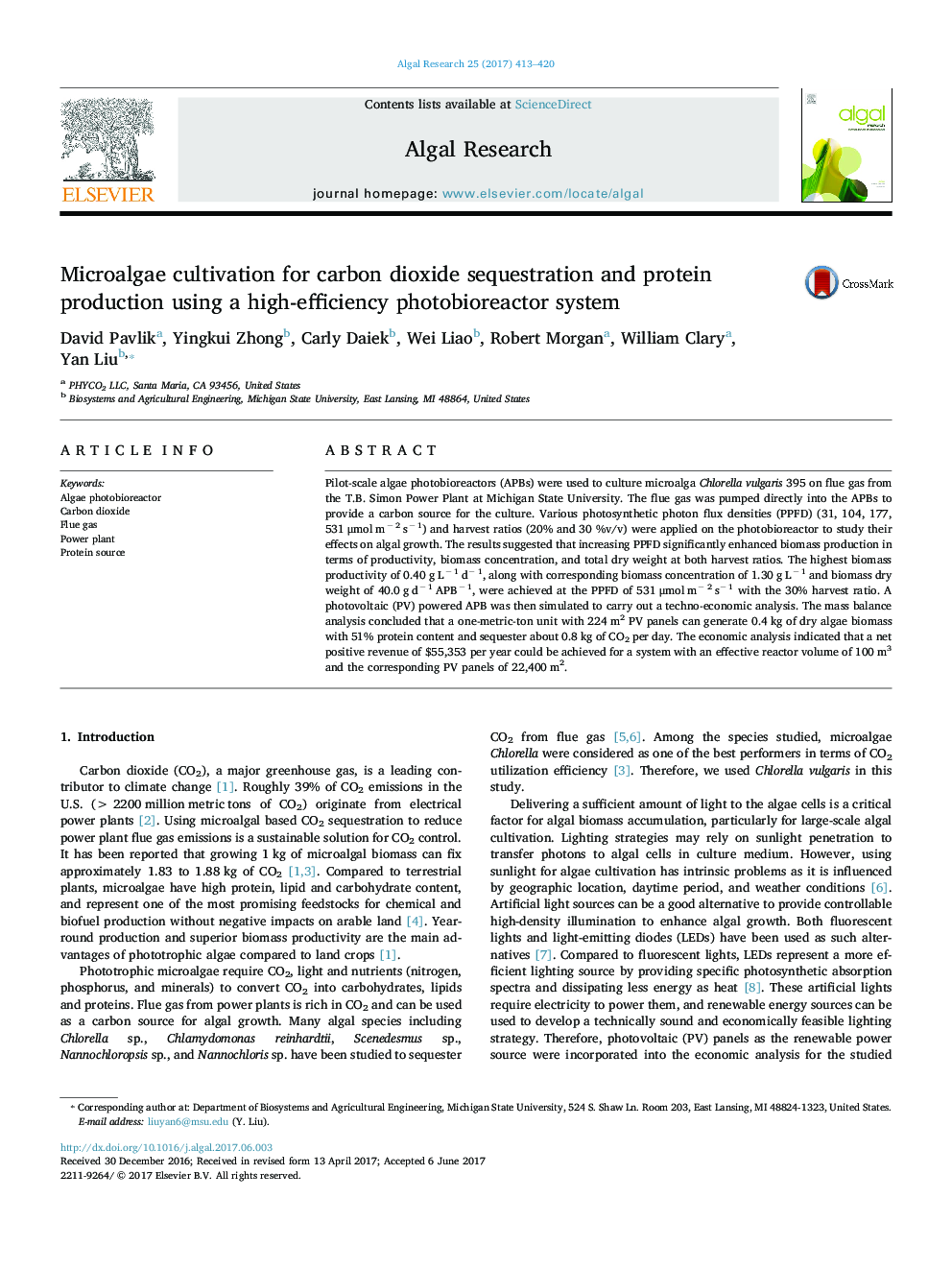| Article ID | Journal | Published Year | Pages | File Type |
|---|---|---|---|---|
| 5478372 | Algal Research | 2017 | 8 Pages |
Abstract
Pilot-scale algae photobioreactors (APBs) were used to culture microalga Chlorella vulgaris 395 on flue gas from the T.B. Simon Power Plant at Michigan State University. The flue gas was pumped directly into the APBs to provide a carbon source for the culture. Various photosynthetic photon flux densities (PPFD) (31, 104, 177, 531 μmol mâ 2 sâ 1) and harvest ratios (20% and 30 %v/v) were applied on the photobioreactor to study their effects on algal growth. The results suggested that increasing PPFD significantly enhanced biomass production in terms of productivity, biomass concentration, and total dry weight at both harvest ratios. The highest biomass productivity of 0.40 g Lâ 1 dâ 1, along with corresponding biomass concentration of 1.30 g Lâ 1 and biomass dry weight of 40.0 g dâ 1 APBâ 1, were achieved at the PPFD of 531 μmol mâ 2 sâ 1 with the 30% harvest ratio. A photovoltaic (PV) powered APB was then simulated to carry out a techno-economic analysis. The mass balance analysis concluded that a one-metric-ton unit with 224 m2 PV panels can generate 0.4 kg of dry algae biomass with 51% protein content and sequester about 0.8 kg of CO2 per day. The economic analysis indicated that a net positive revenue of $55,353 per year could be achieved for a system with an effective reactor volume of 100 m3 and the corresponding PV panels of 22,400 m2.
Related Topics
Physical Sciences and Engineering
Energy
Renewable Energy, Sustainability and the Environment
Authors
David Pavlik, Yingkui Zhong, Carly Daiek, Wei Liao, Robert Morgan, William Clary, Yan Liu,
